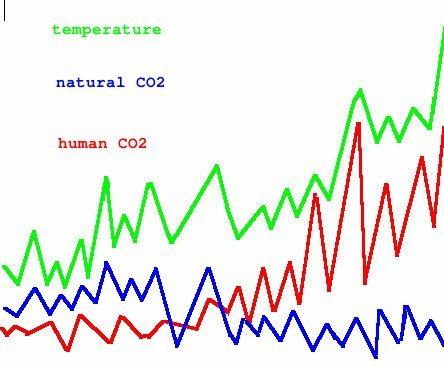Patagonia's Investment in Yerdle Shows Sharing Economy Maturing


Patagonia has invested in Yerdle to advance its reuse agenda
Report: Native Peoples at High Risk from Extractive Industries


Indigenous rights and risks continue to gain attention these days, and no wonder. Global warming and land rights conflicts with industrial operations both continue to impact Indigenous people's rights and way of life, according to a new report released by First Peoples Worldwide.
The Fredericksburg VA-based organization, which was started by Cherokee social entrepreneur Rebecca Adamson, looks at the impact of companies and government polices on native peoples worldwide. Their first report, released in November 2013 highlighted the fact that native communities in all nations surveyed faced some type of risk to their land and cultural way of life when industries like oil, gas and coal mining opened operations on or near their indigenous lands.
This year's report, released last week, looked at 330 extractive industry projects across the world and their impact on the regions' native communities.
Indigenous populations affected by the extractive industry projects were scored according to the protections afforded to them by their governments. Legislation, proactive government efforts and legal recourse were among the factors that led to the scoring. To achieve this, the researchers scored the country on four independent points: i) regional and national recognition ii) land rights, iii) decision making, and iv) civil liberties.
The research also looked at the kinds of extractive processes underway, such as the Keystone pipeline in the U.S. versus mineral mining impacts in Chad and the companies in charge of those extractive projects. It evaluated the companies' reputation for protecting indigenous rights, its willingness to engage in dialogue and the level of risk that the company's operations and approaches posed for local native populations.
The outcome provides a glaring picture of the risks that native populations face today when it comes to extractive operations, particularly in countries where indigenous populations have not yet been recognized. Some of the interesting outcomes of the study include the fact that Colombia had a relatively high rating when it came to recognition of native peoples, but a poor rating when it came to their right to consultation and their ability to exercise civil rights. Under the current government regime, Bolivia on the other hand, recognizes its native populations, affords them moderate rights when it comes to their land and civil rights, but restricts their rights to consultation in issues that affect their lands and privileges.
But the most interesting of all, were the ratings afforded to the U.S. and Canada, which scored the U.S. native populations at a lower risk percentile than Canada populations, even though Canada recognizes its indigenous peoples as First Nations with separate negotiable treaty status, and a strong voice in government regulation. According to this study, the United States affords more civil rights and a higher level of consultation to its indigenous populations than Canada currently accords its Aboriginal peoples.
The report also sheds an interesting light on which corporations have opened their doors to dialogue since last year's report. According to the report, some of the winners are ConocoPhillips, EOG Resources, Occidental Petroleum, Southwestern Energy and Spectra Energy.
You may recall Southwestern Energy as the company that had attempted to open extractive operations in New Brunswick last year and found themselves embroiled in a conflict with the Elsipogtog First Nation. The company had gained government approval, but local populations felt they had not had a say about issues that affected their community.
Unfortunately, the majority of the corporations studied by First Peoples Worldwide have not yet been willing to engage in dialogue with native community representatives. This report, which hopefully will continue on an annual basis may help encourage that. Proactive dialogue like that now undertaken by Southwestern Energy helps save money and company resources, as well as protect the livelihoods and cultural integrity of native peoples.
Image: Dylan Walters
U.S. Government Achieves Renewable Energy Goals


The U.S. General Services Administration (GSA) recently announced that it is on track to achieve the Obama Administration's 2020 renewable energy goals after awarding a competitive power supply contract. Responsible for procuring the goods and services – including energy – federal government agencies need to do their jobs, GSA contracted to purchase 140 megawatts (MW) of wind-generated electricity from the Walnut Ridge Farm currently in development in northwest Illinois, according to a GSA news release.
The ten-year power supply contract is the largest wind energy purchase from a single source in federal government contracting history, according to GSA. It will add over 500,000 megawatt-hours (Mwh) of emissions-free wind-generated electricity per year to the PJM power grid.
GSA's latest renewable power purchase also gives a big boost to the Obama administration's efforts to promote renewable energy resource development and use among Native American communities. The Walnut Ridge wind farm is being developed by MG2 Tribal Energy, a joint venture the Mesa Grande Band of Mission Indians and commercial wind-power project developer Geronimo Energy.
Demonstrating renewable energy leadership
Determined that the federal government take on a leadership position in reducing carbon and greenhouse (GHG) emissions by making use of renewable energy resources, President Obama on February 5, 2013 issued “Presidential Memorandum – Federal Leadership on Energy Management.”
In the Presidential Memorandum, President Obama set a goal requiring federal government agencies to obtain 20 percent of the electricity they use annually from renewable energy resources by 2020. He noted that, during his tenure, federal agencies, as of December 2013, had reduced annual GHG emissions over 15 percent, by 7.8 million metric tons. That's the equivalent of taking some 1.5 million cars off the road. The purchase of 140 MWs of emissions-free wind power from Walnut Ridge will avoid an estimated additional 499,973 metric tons of CO2 emissions a year.
The GSA has calculated that it needs to procure 500,000 to 550,000 Mws of renewable energy per year in order to achieve the federal government's 2020 renewable energy goal. The GSA meets this annual requirement with the award of the 10-year power supply contract with MG2 Tribal Energy and its Walnut Creek wind farm.Renewable energy and Native Americans
The Obama administration has been keen to promote and foster development and use of renewable energy resources by and for Native Americans. Commenting on GSA's awarding the 10-year power supply contract to MG2 Tribal Energy, Mesa Grande Band Chairman and MG2 President Mark Romero stated:
“The Mesa Grande Band is excited about our partnership with both Geronimo Energy and the GSA. This contract represents an important step forward in the history of the Mesa Grande Band because it is entirely consistent with our historic concern for Mother Earth and the continued availability of clean water, land, and air for future generations. Few other economic development opportunities enable us to remain so true to our cultural and spiritual values."
Added Geronimo Energy President Blake Nixon, “Geronimo is proud to develop economically viable renewable energy projects for customers, now including the federal government via this contract with the GSA. Our partnership in MG2 has been a mutually beneficial venture from the beginning, and by securing this PPA with the GSA, our partnership with the Mesa Grande has an exciting future.”
The wind power supply contract will also help the federal government achieve the renewable energy and GHG emissions reduction goals set out in the Energy Policy Act of 2005 and Executive Orders 13423 and 13514. It could also help consumers across the PJM power grid – the largest electricity market in the world – meet their electricity needs, GSA points out. The PJM power grid spans all or parts of Delaware, Illinois, Indiana, Kentucky, Maryland, Michigan, New Jersey, North Carolina, Ohio, Pennsylvania, Tennessee, Virginia, West Virginia and the District of Columbia.
Image credits: 1), 3) Geronimo Energy; 2) GSA; 3) Mesa Verde Band of Mission Indians
Norway Ranked Number One For Climate Change Adaptability


Norway ranked number one in the University of Notre Dame’s Global Adaptation Index (ND-GAIN) for its ability to adapt to climate change. ND-GAIN ranks over 175 countries on their ability to adapt to climate change. Norway has been at the top of ND-GAIN’s rankings for almost 20 years. Scandinavian countries are all ranked higher than Australia, Canada and the U.S., big countries loaded with natural resources. Sweden ranked number three, Finland number 4, and Denmark number five while Australia ranked number 6, United States number eight, and Canada number 11.
The rankings were released on November 5 at the 2014 Notre Dame Global Adaptation Index Annual Meeting hosted by the Wilson Center. The ND-GAIN ranks countries every year “based on their vulnerability to climate change and their readiness to adapt to the droughts, superstorms and natural disasters that climate change can cause,” according to a press release. It is also used to keep track of a country’s progress over the last 18 years.
“In Norway and the other members of the ND-GAIN leaderboard, we see role models in countries positioned to adapt to climate change,” said Jessica Hellman, research director of the Notre Dame Global Adaptation Index.
The ND-GAIN list shows a gap between rich and poor countries when it comes to climate change adaptation. Developing countries ranked far lower than developed. African countries rank at the bottom of the list, occupying the last six spots. The list also shows that some countries have improved, such as Russia and China while others have gone down in ranking such as El Salvador, Jordan, Belize and Romania.
Republican politicians are climate change deniers
Perhaps the reason why the U.S. ranks behind Scandinavian countries on the ND-GAIN index is because so many of its politicians deny climate change occurs. Lee Fang of The Republic Report created a mash-up of Republican politicians statements on climate change. One word can sum up their statements: denial.
Here are some of the statements:
“I don’t necessarily think the climate is changing,” said U.S. Senate candidate, Shelley Moore Capito (R-WV).“This is not settled science. Many of the same scientists believe there is no God, but they don’t know. There’s no science on that. So, scientists, like the rest of us, can have beliefs, but that doesn’t make it science,” Rep. Todd Rokita (R-IN)
While Rep. Jason Chaffetz (R-UT) admitted that the air is affected by what we put into it, he said, “The Al Gore defined global warming is a farce.”
Rep. Dan Benishek (R-MI) said, “I’m not sure there’s any evidence to prove that there’s man-made catastrophic global warming,” Rep. Dan Benishek (R-MI).
There’s a simple reason why Republican politicians deny climate change. They don’t want to bite the hand that feeds them. Take Senator Mitch McConnell. He also appears on the mash-up of Republican politicians. When asked about climate change he said, “I’m not interested in handicapping Kentucky’s economy in pursuit of a crusade no one else is following. It makes no sense.” McConnell received $3.6 million in contributions from fossil fuel companies for his successful re-election campaign.
Photo: Lisa
Investors call for global tax reform and transparency


In a global first, a group of institutional asset owners and managers are jointly calling for comprehensive transparency and disclosure to be adopted as core principles in reform of the international taxation system to be put before the G20 Leaders Summit in Brisbane this weekend.
The group including the £150B UK Local Authority Pension Fund Forum (LAPFF)**, Quebec fund Batirente, Royal London Asset Management (RLAM), Paris based OFI Asset Management & Triodos Investment Management from the Netherlands have issued a statement supporting the initial stage of the OECD BEPS Action Plan and urging a general improvement in corporate governance, transparency and disclosure standards around taxation issues.
“Modernising the international taxation framework cannot be separated from global financial integrity, rebuilding trust and strengthening resilience in international financial structures and investment markets,” said Kieran Quinn, LAPFF chair.
“As international investors, ensuring sound governance practices are embedded in corporate activities, including taxation planning and associated reporting and disclosure mechanisms is a fundamental concern. Financial secrecy, opaque accounts and aggressive tax practices do not best meet our underlying objectives as inter-generational investors aiming for sustainable value creation.”
“We urge G20 Leaders to ensure transparency and disclosure, are directly embedded as core principles in relevant tax treaties and national agreements and to work towards a comprehensive multilateral agreement at G20 2015.”
“In addition, we call on transnational corporations to recognise that many existing financial practices around secrecy and taxation are not sustainable and no longer meet institutional investor governance expectations nor reflect growing civil society views of responsible, transparent corporate behaviour within a licence to operate.”
Picture credit: © Lukelake | Dreamstime com - Save Your Savings Photo
Sustainability leaders growing in executive influence, says Verdantix


According to a new global survey of 260 heads of sustainability conducted by Verdantix, the independent analyst company, sustainability leaders have increasing executive committee influence.
Their decision-making authority and budgetary contributions span a wide range of areas including assurance, consulting, energy management, natural capital, reporting, supply chain and other sustainability activities. Over 90% of responding firms have a sustainability leader who reports into the CEO or another member of the executive committee.
“We found that while few sustainability leaders point to large budget increases, our results reveal sustainability spending across entire organizations is typically up to ten times bigger than the sustainability team’s budget with over two-thirds expecting corporate-wide spending growth” stated Yaowen Ma, Verdantix analyst and author of the report.
The report, Global Survey 2014: Sustainability Budgets And Priorities is based on interviews with senior sustainability decision-makers and budget-holders from 260 firms with revenues between $250m and over $20bn. The Heads of Sustainability were from 13 territories: Australia, Brazil, Canada, China, France, Germany, India, Mexico, the Middle East, Russia, South Africa, the UK, and the USA. Respondents’ firms spanned 21 industries covering business and financial services, consumer services, energy and basic resources, manufacturing, and retail and consumer products.
The report found that firms favour spending on employees with 28% of sustainability budgets being invested on employees and 21% spent on consulting services (10% of budgets are spent on assurance providers). Interestingly, 8 out of 10 firms already publish sustainability reports but only 39% of firms pay for external assurance of their entire sustainability or integrated report.
Picture credit: © Catur  | Dreamstime com  - World In Suitcase Photo
Slow Fashion Startup Zady to Launch American-Made Private Label


While big apparel brands ramp up production of a slew of fashions to gear up for the holiday season, Zady, the e-commerce curator of sustainably made womenswear, menswear and accessories, is set to launch its own collection of ethical styles for the holidays — with one slight difference: It will only sell one item.
In the spirit of slow fashion, the New York-based startup plans to release items from its first collection one-at-a-time in the coming months. The initial private label piece, which will become available on their site in the coming weeks, is a knit wool sweater that was entirely designed and manufactured in the United States.
Zady prides itself in offering high-quality clothes and home goods that are made to last and provide an alternative to the world of disposable, fast fashion. Its new Essential Collection is an extension of that endeavor.
Farm to Closet
Self-described as the “Whole Foods of fashion,” Zady has built an online destination that does more than simply sell local, organic and ethically made products — it espouses conscious living and engages consumers in each product’s journey from farm to closet.
“Whole Foods is massively successful because there’s a consumer who is awakening,” said Maxine Bédat, Zady’s co-founder. “The conversation is changing. Whole Foods pushed organic food into the forefront, and now Walmart carries organic food. We’re reaching out to a community of people who want to buy beautiful products and feel good about it.”
Buyers of the new Essential Collection sweater have much to feel good about: The knit is made with natural fibers and low impact dyes, and it's made by manufacturers who treat their employees well.
Another value that shoppers can revel in with Zady’s new collection is that all products are completely made in the U.S. The wool for the sweater, for example, was grown in Shaniko, Oregon, treated in Jamestown, South Carolina, dyed in Philadelphia, and manufactured in Southern California.
Made in the USA
Making a garment that’s entirely made in America is no small feat. Fifty years ago, about 95 percent of apparel worn in the United States was made domestically – but today that number is closer to 2 percent. Supporting the domestic economy is important to Zady, though the company also sees the environmental value of making its new collection at home.
Environmental standards are much higher in the U.S. than in unregulated countries, where the vast majority of garments are made. By choosing to make all products in its collection in the U.S., one product at a time, Zady is able to build relationships with people across its supply chain — from farmers to knitters — and vouch for its high standards.
“It's not easy to vet a supply chain, but it's certainly easier when what you produce is made domestically,” said Soraya Darabi, Zady co-founder. “In the case of our knit, we looked far and wide for a ranch that treats its sheep very well, and for owners…who are incredibly connected to the Earth.”“Once our locations were selected for the sheering, washing, dyeing, spinning and constructing [of the knit], we made a point to visit each location. From Imperial Stock Ranch in Oregon to G.J. Littlewood Dye House in Pennsylvania, we've met the owners of each factory and spoken to them at length about our mission, which aligns with their own.”
Storytelling
Besides its focus on sustainable fashion, what sets Zady apart from other e-commerce retailers is its focus on the people — and stories — behind each garment and accessory on its site. All products sold on Zady’s site are accompanied with words and images that tell the story of the product’s making and makers.
The company will use storytelling to engage consumers with its new collection, too. Starting with its sweater, Zady will showcase videos that unwrap the complicated supply chain story and give consumers an insight into the making of the garment. A behind-the-scenes look of the people, the “survivors” as Bédat puts it, who made the collection possible every step of the way is now available on their site.
With those human stories in mind, consumers might view their Zady sweater in a new light — and perhaps think twice before ditching it next year for the season’s newest trends.
Image credit: Zady via Facebook
How to Power Through the B Corp Finish Line


This is a weekly series of excerpts from the new book “The B Corp Handbook: How to Use Business as a Force for Good“ (Berrett-Koehler Publishers, October 13, 2014). Click here to read the rest of the excerpts.
Our series continues with the next installment of a six-week, turbocharged Quick Start Guide to becoming a Certified B Corporation.
Week one focused on getting a baseline assessment of your social and environmental performance; week two focused on motivating and engaging your team; week three was about creating an action plan for B Corp certification; and week four discussed how you can raise your B Corp assessment score.
Week Five: Fine tune your assessment score
Time estimate: One to five hoursOBJECTIVE: As your team is working through the action plan, keep track of your improvements by inserting your data into the B Impact Assessment. This will give you an updated score.
END RESULT: A recalculated and refined B Impact Assessment score.
1. Ready to tackle bigger items?
Depending on the measures you have implemented, the difficulty of those measures, and the results of the phone review with a B Lab staff member, your score may have improved since your initial assessment results. Now is a good time to reconnect with the key internal stakeholders in your company, such as the people you invited to the summit during week two.
Update these key stakeholders on your progress so far and have a conversation about the remaining (and possibly bigger) action items on your list. If you have not done so already, have a discussion about whether your company is interested in becoming a Certified B Corporation.
2. Next steps for B Corp certification
After the phone review, did your score remain above 80 points? If your score dropped below 80, go back to the Improve Your Impact section in the B Impact Assessment to identify practices that can raise your score. The B Lab staff can give you recommendations to help you identify any low-hanging fruit. If your score stayed above 80, however, you can start submitting supporting documentation to verify your responses.
3. Submit supporting documentation
After a B Lab staff member moves your assessment to the next stage of the review process, the B Impact Assessment will randomly select eight to twelve heavily weighted questions and ask you to submit supporting documentation to verify your responses. For example, if you said you have an environmental purchasing policy, B Lab’s staff may ask you to upload that policy to the B Impact Assessment for review. Usually, the most heavily weighted questions are selected for verification. If your company is not able to verify a particular answer, the answer is changed and the credit is removed.
4. Make it official
If the B Lab staff does not have any further questions about your uploaded documents, you are nearly finished. B Lab will send you an electronic version of the B Corp terms and conditions and the B Corporation Declaration of Interdependence and will ask you to pay the applicable B Corp certification fee.
Ryan's Tip: Remind your staff to save any notes they have on why and how they answered certain questions on the assessment. These notes will come in handy if your company decides to become a B Corporation and you are asked to produce evidence of your practices.
Coming next week: Week Six: Celebrate and Next Steps
Image credit: B Lab
Ryan Honeyman is a sustainability consultant, executive coach, keynote speaker, and author of The B Corp Handbook: How to Use Business as a Force for Good. Ryan helps businesses save money, improve employee satisfaction, and increase brand value by helping them maximize the value of their sustainability efforts, including helping companies certify and thrive as B Corps. His clients include Ben & Jerry’s, Klean Kanteen, Nutiva, McEvoy Ranch, Opticos Design, CleanWell, Exygy, and the Filene Research Institute.
To get exclusive updates and free resources about the B Corp movement, sign up for Ryan’s monthly newsletter. You can also visit honeymanconsulting.com or follow Ryan on Twitter:@honeymanconsult.
Video Shows What Tidal Flooding and Sea Level Rise Will Look Like


Maybe some visual evidence of the effects of tidal flooding and the rise of sea levels due to climate change will help transform debate and talk into action.
A video from the Union of Concerned Scientists helpfully illustrates, in about three-and-a-half minutes, the “growing impacts of global warming.”
It’s not that complicated: Water expands when heated. Sea levels are rising, and sea levels are rising faster as global warming heats up the planet.
UCS makes the point that, “Today scores of coastal communities are seeing more frequent flooding during high tides. As sea level rises higher over the next 15 to 30 years, tidal flooding is expected to occur more often, cause more disruption, and even render some areas unusable — all within the time frame of a typical home mortgage.”
Give the video a view:
https://www.youtube.com/watch?v=G-fZnlR_IJ0&feature=youtu.be
UCS also published a 76-page report, Encroaching Tides: How Sea Level Rise and Tidal Flooding Threaten U.S. East and Gulf Coast Communities over the Next 30 Years.
The report explains, “High tides are having a greater impact on U.S. communities today than in decades past for two reasons. First, our shores are more heavily developed, so higher tides affect more people and infrastructure. Second, these tides are now occurring on top of elevated — and rising — sea levels.”
Building coastal resilience is both a local and a national imperative: “Coastal communities, and the nation as a whole, need to start planning today to cope with sea level rise and unprecedented tidal flooding, and to take swift and decisive action to limit longer-term damage to our coasts.”
Tidal flooding “has simply become a fact of life.” By 2045, some coastal communities will face flooding 24 times a year – or twice a month, the UCS says.
For all those climate deniers out there, if you have read this far, I recommend that you read a recent article republished by Salon: “I was once a climate change denier,” by Kasra Hassani, a scientist with a PhD in microbiology and immunology.
In the article, Hassani describes his journey past all of the typical denier positions, such as the “we have bigger problems” phase, or the “it’s all a conspiracy” phase, or the “okay, it may be happening, but who knows if it’s our fault” phase.
His bottom line: “No human is free of bias. There could be certain social, political and even personal circumstances that would stiffen a thought or belief in one’s mind. It takes effort try to identify our biases and rid ourselves of them, or at least be conscious of them. But it’s definitely worth it.” Bravo!
Climate change is not something that will happen in the distant future, and even the near-term future doesn’t look very good at all; it’s happening right now, and action needs to happen right now.
Image credit: Picture extracted from the USC Encroaching Tides report
Positive ‘Spin’ Grows U.S. Economy … But For How Long?


Editor's Note: This post originally appeared on the author's personal blog, Enlightened Economics.
By Ron Robins
American political and economic elites are forever spinning the idea that self-sustaining economic growth is imminent. And this time the spin might be working — but only for a while.
Underpinning the spin are U.S. government economic statistics. Unfortunately — and it seems unknown to even most economists — there are huge methodological and philosophical issues with these statistics, some of which I detailed in a recent post entitled Dubious Positive Biases in Revised U.S. Economic Statistics.
In that post I investigated how unemployment rates, payroll numbers, the consumer price index (CPI), savings rates and gross domestic product (GDP), have seen their statistical philosophical and methodological foundations changed. And these changes almost always make the economy appear in better shape than it would have been by using prior statistical methodologies.
Furthermore, these changed methodologies have not occurred by only wanting to make the statistics more honest. No. In fact, political interference (documented by Shadowstats) is behind most of the major changes so that the government of the day appeared in a better light.
The spin of this ‘growing’ economy has been taken to heart by the richest 20 percent of families — those who have been able to borrow for next to nothing and invest in foreclosed homes, stock and bond markets. They have invested and seen their investments rise markedly. They are happy.
But for most people — the other 80 percent — they are neither happy nor convinced of the efficacy of the present government’s economic spin. (See the exit polls of the Nov. 4 midterm elections.) Truly illustrating the difference in economic well-being between the rich and everyone else are the results of a recent Gallup poll.
In August, Gallup found that, “Americans with an annual household income of $90,000 or more continue to have more economic confidence than those who live in households with less annual income. Upper-income Americans had an index score of -2 in August, up slightly from -5 the past two months. Lower and middle-income Americans, on the other hand, averaged -18, similar to -19 in July.” Recent data from multiple sources indicates this divergence continues to exist.
The difficulty for most working Americans is that according to the Bureau of Labor Statistics (BLS), workers' incomes over the past few years are barely matching — if at all — their rising cost of living as measured by BLS’s own (politically influenced) consumer price index (CPI). But ask most workers and they will tell you their living costs are up much more than the government’s CPI.
This is verified by independent inflation measures such as the Guild Basic Needs Index (GBNI), which includes only food, clothing, shelter and energy (thus covering most of the expenses for the majority of people). Using their latest data points from July 2009 to July 2014, the GBNI rose by a significant 22.8 percent compared to the10.6 percent rise in the CPI over the same period.
Interestingly, while living costs have risen and left individuals with less disposable income, savings rates have increased. It seems the experience of financially difficult times for most people in recent years, including unemployment, severe losses in home equity and for many the need to save for a fast-approaching retirement, has convinced them to save more. Savings rates are now averaging above 5 percent, says the Bureau of Economic Analysis (BEA).
But again, savings rates would be much less if previous methodologies were used. For instance, in 2006 and 2007, savings rates were about -2 percent but had become +3 percent after methodical revisions. Savings rates prior to 1985 were mostly above 10 percent.
Perhaps of even greater concern is that consumer debt is once again growing much faster than incomes -- indicating the U.S. is on the continuing treadmill to further financial crises. Between July 2011 and July 2014, Federal Reserve data show consumer debt grew from $2.722 billion to $3.233 billion, a rise of 18.8 percent, compared to personal income gains over the same period of just 11.8 percent ($13.294 billion and $14.860 billion).
The real concern with consumer debt was highlighted by Constantine Van Hoffman, writing for CBS Moneywatch, on Sept. 11, 2014. She wrote that, “[quoting CardHub] ‘By the end of 2014 U.S. consumers [with about $7,000 each in credit card debt] will be roughly $1,300 away from the credit card debt tipping point, where minimum payments become unsustainable and delinquencies skyrocket.'” And this is with ultra low-interest rates. What happens when they rise?
Rapid debt accumulation in excess of income growth indicates people demanding goods and services now no matter the eventual financial cost to themselves. To me, such a mindset illustrates deep inner insecurity and lack of personal fulfillment. Unbeknownst to our political and economic leaders, this mental state is really the central issue that has to be resolved before lasting economic sustainability can be gained. (See my 2007 post, The Missing Ingredient in Economics — Consciousness.)
Government and financial institutions are aware of the harm caused by excessive and irresponsible debt growth and asset valuations. Alan Greenspan, former Chairman of the Federal Reserve, has remarked that central banks are afraid to ‘prick’ asset bubbles for fear of causing market chaos. So, our economic elites believe they must continue to spin the illusion of economic good times no-matter the reality. Eventually, as in 2008, the illusory good times end, and sadly, financial difficulties and ruin occurs for many.
As understanding grows about the spinning of government economic statistics, as increasing savings rates restrain consumer spending, and as consumer debt rises far faster than incomes, it is just a question of time before the spin stops working and a bust ensues. For now though, the spin is working for the 20 percent. And they are happy.
Image credit: Flickr/401(k) 2012
For over forty years Ron Robins has engaged in, and devoted himself to, the fields of economics, finance, and the development of human consciousness. He is deeply concerned about America's economic and financial problems and is writing a book on how he believes they can be fixed. The book's working title is "Resolving America's Economic Quagmire," with a subtitle, "People gaining inner fulfillment is the key.” For all of his economics and ethical investing writing, see Ron Robins, MBA. Visit Ron's globally popular and respected ethical investing website at Investing for the Soul. To contact Ron, click here.